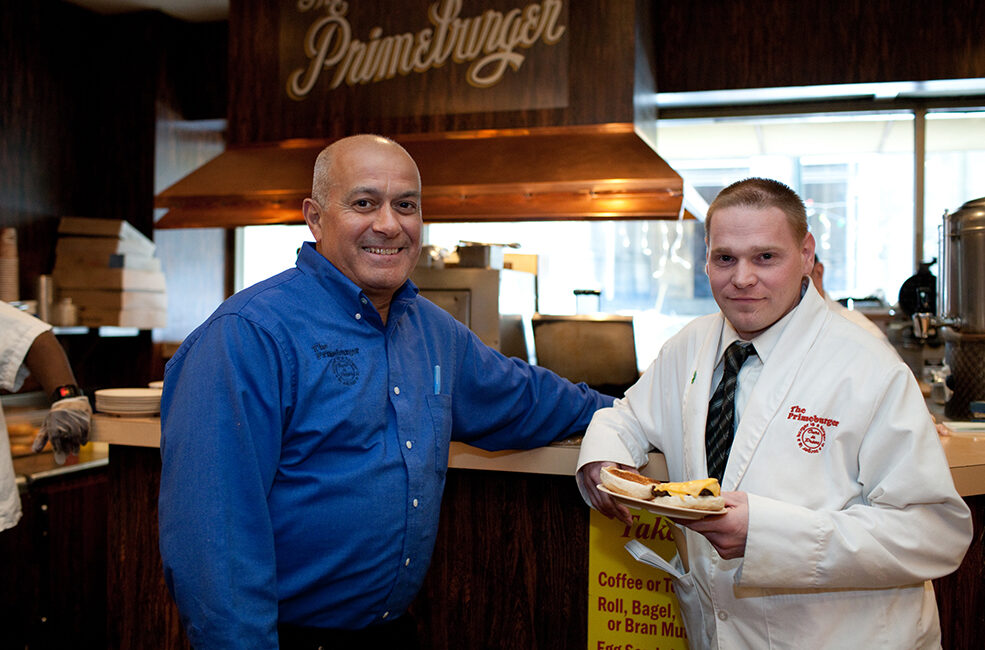“The easy step for anybody who’s coming out of jail would be to revert back to what they were doing because this is one thing that they know how to do the best. The fear of not knowing and messing up, that’s what stops you from moving on. I didn’t know what to say in an interview, how to act—basically because I hadn’t had a real job before. Don’t say, ‘I’m never going to do anything in life.’ There’s always the chance as long as you’re willing to take the chance.”
-Lobsang, Center for Employment Opportunities participant


“The easy step for anybody who’s coming out of jail would be to revert back to what they were doing because this is one thing that they know how to do the best. The fear of not knowing and messing up, that’s what stops you from moving on. I didn’t know what to say in an interview, how to act—basically because I hadn’t had a real job before. Don’t say, ‘I’m never going to do anything in life.’ There’s always the chance as long as you’re willing to take the chance.”
-Lobsang, Center for Employment Opportunities participant
What it does
More than 400,000 young adults age 18 to 24 are presently incarcerated. Once they exit the prison system, 80% are expected to return within three years. The Center for Employment Opportunities provides short-term paid transitional employment, life skills education, full-time job placement, and post-placement services to formerly incarcerated individuals. Initially, maintenance crew work provides immediate opportunities for those returning from prison to work, earn a paycheck, and build skills—as early as four days after signing up.
Participants not only earn a paycheck, but also build connections with staff, create a work history, and connect to more comprehensive services. They meet one-on-one with a coach regularly while in the program, and up to a year after job placement. Individual and group programming emphasizes the practical skills of getting and maintaining a job (interviewing, dealing with conflict, how to describe past conviction). Participants receive monthly stipends for maintaining employment and meeting with their CEO coach. If they lose a job, they can re-enroll in transitional work during their job search. In addition to supporting participants, CEO works with private partners to recruit and support employers open to hiring CEO graduates.
How effective is it
Stable employment is a strong predictor of lower long-term recidivism. A rigorous external study found that CEO reduced the three-year recidivism rate by up to 22% for participants recently released from prison, with particularly strong effects for the most high-risk groups such as young adults, those without a high school diploma or GED, and those with prior convictions. The cost of providing CEO services is approximately $6,000 per participant for the year-long program, including $1,000 in direct payments to participants. The same external study estimates that, based on overall effectiveness, the program generates between $1.26 and $3.85 in benefits to society per $1.00 of cost.
How you can help
You can give to CEO for central or local operations through its website. About 80% of CEO’s funding comes from local government and other work contracts, meaning that philanthropic support can leverage existing public and private market funds for greater impact. In addition, employers can partner with CEO to hire participants and receive support and tax benefits. Employers can also contract services through CEO work crews—CEO provides all training, equipment, and oversight. Employers interested in hiring CEO participants or work crews, or donors interested in supporting expansion to new sites, can contact CEO.
Personalize this project
If CEO is not currently in your community, there may be other local programs with similar models in various sectors. Examples include nonprofit programs like Safer Foundation in Chicago and Operation New Hope in Florida, nonprofit networks like the Anti-Recidivism Coalition in California, programs of for-profit firms like EMPLOY Minnesota, and government programs like the Boston Reentry Initiative.
